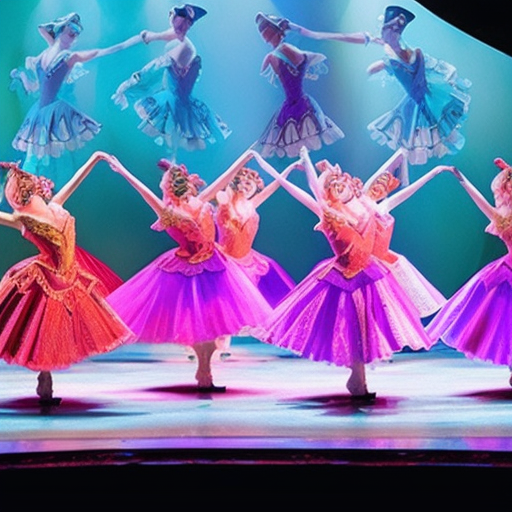Musical Theater: A Fusion of Music, Dance, and Drama
Musical theater is a vibrant art form that combines music, dance, and drama to create a unique and immersive theatrical experience. It has its roots in ancient Greek drama, but the modern form of musical theater emerged in the late 19th and early 20th centuries. Today, it is a popular and influential genre that continues to captivate audiences worldwide.
The Origins of Musical Theater
The origins of musical theater can be traced back to ancient Greece, where music and dance were integral parts of theatrical performances. However, it was not until the 19th century that the modern form of musical theater began to take shape. The works of composers such as Jacques Offenbach and Gilbert and Sullivan laid the foundation for what would become the musical theater we know today.
The Golden Age of Musical Theater
The 1940s to the 1960s is often referred to as the “Golden Age” of musical theater. During this period, iconic shows such as “Oklahoma!”, “West Side Story”, and “The Sound of Music” were created. These shows featured memorable songs, intricate choreography, and compelling storytelling, setting the standard for future musicals.
The Evolution of Musical Theater
In the 1970s and 1980s, musical theater underwent a significant transformation. Shows like “Hair” and “Rent” tackled social and political issues, pushing the boundaries of traditional musical theater. This era also saw the rise of concept musicals, which focused more on themes and ideas rather than a linear narrative.
In recent years, musical theater has continued to evolve and adapt to the changing times. Shows like “Hamilton” and “Dear Evan Hansen” have embraced contemporary music styles and explored relevant social issues, resonating with a new generation of theatergoers.
The Elements of Musical Theater
Musical theater combines several artistic elements to create a cohesive and engaging performance. These elements include:
- Music: Music is at the heart of musical theater. It can range from catchy show tunes to complex orchestral arrangements, and it helps convey the emotions and narrative of the story.
- Dance: Dance plays a crucial role in musical theater, adding visual spectacle and enhancing the storytelling. Choreography can range from classical ballet to contemporary dance styles, depending on the show’s theme and style.
- Drama: The dramatic elements of musical theater include the script, characters, and plot. The storylines can be light-hearted and comedic or deeply emotional and thought-provoking.
- Set Design and Costumes: The visual elements of musical theater, including set design and costumes, help create the world of the show. These elements contribute to the overall atmosphere and aesthetic of the production.
The Impact of Musical Theater
Musical theater has had a profound impact on popular culture and society as a whole. It has the power to entertain, inspire, and provoke thought. Many iconic songs from musicals have become part of the cultural lexicon, and the influence of musical theater can be seen in other art forms such as film and television.
Moreover, musical theater provides a platform for diverse voices and stories to be heard. It has the ability to address social issues, challenge stereotypes, and promote inclusivity. The success of shows like “Hamilton” and “The Color Purple” has demonstrated the power of musical theater to spark important conversations and create meaningful change.
In conclusion, musical theater is a dynamic and multifaceted art form that brings together music, dance, and drama to create a truly immersive experience. From its ancient origins to its modern-day evolution, musical theater continues to captivate audiences and leave a lasting impact on both the arts and society as a whole.












